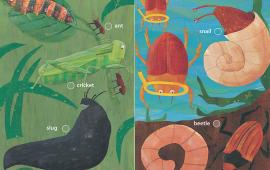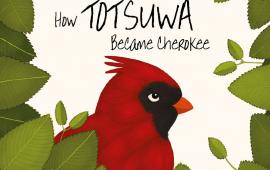Early to bed, early to rise, makes [us all] healthy, wealthy and wise.
This is one of the many nursery rhymes I learned as a child. I wasn’t very old, however, before I realised that for health, there’s a lot more to it than just making sure you get a good night’s sleep. Diet is also pretty important. And while you need to make sure you get plenty of fresh fruit and vegetables, it’s just as important that you enjoy what you’re eating.
Now, whenever I visit the supermarket, a greengrocer or a market, I’m astonished at the sheer variety of fruit and vegetables out there, no matter what time of year it is. I’ve tried many of them in various forms, including in pies with a cup of tea or glass of lemonade, depending on whether they’re fruits or vegetables, there are still times when I’m not quite sure what I’m looking at.
In the part of the world where I grew up, our native fruits are mainly hardy little crops like apples, pears and berries, and our vegetables are root vegetables like potatoes and turnips, with some salads and herbs. If you’re lucky you might live in a part of the country where you can grow produce that requires the support of a vine and lots of sunshine, like tomatoes and grapes, and of course there’s always the option of setting up a mini green house or a cold frame or a raised bed if you have the space.
When I first encountered food from far away places, I was entranced. I had never realised that fruit and vegetables vary so much from country to country, even county to county. Cox’s Pippin apples taste very different, for instance, from or Granny Smith or Pink Lady varieties. Carrots and parsnips also taste different – the soil where they’re grown, the climate, and how old they are: all these factors make a difference. (And did you know carrots were originally a blue-purple colour?)
It isn’t just fruit and vegetables that vary around the world either. Eating well requires us to have a good intake of the major food groups; and wherever you go, wherever you’re from, you are likely to have at least one form of starch in your diet. Foods fall into one of three groups known as macronutrients: fats, proteins, and carbohydrates. All three are essential for us to function properly and give us enough energy to study, play, and go about our daily business.
Starch is one of the most important carbohydrates. Health professionals advise that they should make up around a third of our diets for us to be healthy – but that doesn’t mean just eating a bag of chips or French fries every day. There are so many other options, and each culture has its own staple. Potatoes and bread are the two staples I know best, but I still remember my first taste of pasta that didn’t come out of a tin. I was amazed at the texture and the fact that it actually had a flavour – amusing to me now, when I look around and there are pastas with all kinds of ingredients available. I also still remember being taught the most efficient way to eat spaghetti, with a fork and spoon. When it comes to rice, it always meant rice pudding; bland and sweet and quite “gloopy” (or glutinous, to give it a more ‘approved’ description). When I first tasted wild rice I couldn’t believe it was the same food group. Now I have the choice between Basmati, Jasmine, long grain, short grain, sticky… (By the way, did you know there is an international rice gene bank where samples from over 90,000 global species of rice are stored?)
My adventure with noodles was just as intriguing. I’d always thought of them as tiny little circles in a very sweet tomato sauce; and suddenly here I was, faced with udon, ramen, vermicelli, and even spaghetti.
So, what’s the major starch in your diet? What colour is it? Do you like it better in a savoury dish or as a pudding or dessert? Do you know where it’s grown? If it isn’t available, what’s your next choice?
Having now made myself thoroughly hungry, I am now off to explore our store cupboards to see what starch I can have for today’s lunch.
References
Around the World in 5 Kinds of Noodles, Plated.com, https://www.plated.com/morsel/kinds-of-noodles-around-world/, (last accessed 26 March 2019)
Carrot colours – The Pigment Power of Carrots, The Carrot Museum, http://www.carrotmuseum.co.uk/carrotcolours.html (last accessed 26 March 2019)
Food Group Fun, Great Ormond Street Hospital (c2019), https://www.gosh.nhs.uk/children/general-health-advice/eat-smart/food-science/food-group-fun (last accessed 26 March 2019)
Starchy Foods and Carbohydrates (2017), NHS, https://www.nhs.uk/live-well/eat-well/starchy-foods-and-carbohydrates/ (last accessed 26 March 2019)
Types of rice (c2019), the rice association http://www.riceassociation.org.uk/content/1/18/types-of-rice.html (last accessed 26 March 2019)
Now, whenever I visit the supermarket, a greengrocer or a market, I’m astonished at the sheer variety of fruit and vegetables out there, no matter what time of year it is. I’ve tried many of them in various forms, including in pies with a cup of tea or glass of lemonade, depending on whether they’re fruits or vegetables, there are still times when I’m not quite sure what I’m looking at.
In the part of the world where I grew up, our native fruits are mainly hardy little crops like apples, pears and berries, and our vegetables are root vegetables like potatoes and turnips, with some salads and herbs. If you’re lucky you might live in a part of the country where you can grow produce that requires the support of a vine and lots of sunshine, like tomatoes and grapes, and of course there’s always the option of setting up a mini green house or a cold frame or a raised bed if you have the space.
When I first encountered food from far away places, I was entranced. I had never realised that fruit and vegetables vary so much from country to country, even county to county. Cox’s Pippin apples taste very different, for instance, from or Granny Smith or Pink Lady varieties. Carrots and parsnips also taste different – the soil where they’re grown, the climate, and how old they are: all these factors make a difference. (And did you know carrots were originally a blue-purple colour?)
It isn’t just fruit and vegetables that vary around the world either. Eating well requires us to have a good intake of the major food groups; and wherever you go, wherever you’re from, you are likely to have at least one form of starch in your diet. Foods fall into one of three groups known as macronutrients: fats, proteins, and carbohydrates. All three are essential for us to function properly and give us enough energy to study, play, and go about our daily business.
Starch is one of the most important carbohydrates. Health professionals advise that they should make up around a third of our diets for us to be healthy – but that doesn’t mean just eating a bag of chips or French fries every day. There are so many other options, and each culture has its own staple. Potatoes and bread are the two staples I know best, but I still remember my first taste of pasta that didn’t come out of a tin. I was amazed at the texture and the fact that it actually had a flavour – amusing to me now, when I look around and there are pastas with all kinds of ingredients available. I also still remember being taught the most efficient way to eat spaghetti, with a fork and spoon. When it comes to rice, it always meant rice pudding; bland and sweet and quite “gloopy” (or glutinous, to give it a more ‘approved’ description). When I first tasted wild rice I couldn’t believe it was the same food group. Now I have the choice between Basmati, Jasmine, long grain, short grain, sticky… (By the way, did you know there is an international rice gene bank where samples from over 90,000 global species of rice are stored?)
My adventure with noodles was just as intriguing. I’d always thought of them as tiny little circles in a very sweet tomato sauce; and suddenly here I was, faced with udon, ramen, vermicelli, and even spaghetti.
So, what’s the major starch in your diet? What colour is it? Do you like it better in a savoury dish or as a pudding or dessert? Do you know where it’s grown? If it isn’t available, what’s your next choice?
Having now made myself thoroughly hungry, I am now off to explore our store cupboards to see what starch I can have for today’s lunch.
References
Around the World in 5 Kinds of Noodles, Plated.com, https://www.plated.com/morsel/kinds-of-noodles-around-world/, (last accessed 26 March 2019)
Carrot colours – The Pigment Power of Carrots, The Carrot Museum, http://www.carrotmuseum.co.uk/carrotcolours.html (last accessed 26 March 2019)
Food Group Fun, Great Ormond Street Hospital (c2019), https://www.gosh.nhs.uk/children/general-health-advice/eat-smart/food-science/food-group-fun (last accessed 26 March 2019)
Starchy Foods and Carbohydrates (2017), NHS, https://www.nhs.uk/live-well/eat-well/starchy-foods-and-carbohydrates/ (last accessed 26 March 2019)
Types of rice (c2019), the rice association http://www.riceassociation.org.uk/content/1/18/types-of-rice.html (last accessed 26 March 2019)
Related Posts
-
So how many words per minute can you speak?
-
Bugs and butterflies, seaweed and stars – nature surveys for citizen scientists
-
Saving a Language
-
Who Should Be Teaching The Teachers? by Ali Harwood
-
What are the seven types of human intelligence? Or are there eight, or even ten, intelligence types?
-
The man in the moon, or is it a hare? Lunar expressions for the 50th Anniversary of the Moon Landing
-
Language – so much more than just the spoken word
-
Look Before You Leap – And What Have Silk Gloves Got To Do With Leap Years?
-
In the Land of the Northern Lights
-
Celebrating Refugee Week

![Early to bed, early to rise, makes [us all] healthy, wealthy and wise.](https://uk.mantralingua.com/sites/default/files/Tropical%20fruit%20basketsm.jpg)











